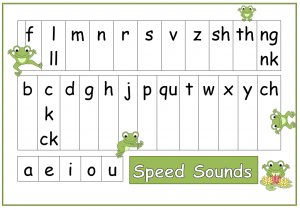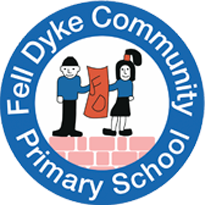Phonics – Read Write Inc.
What is Read Write Inc?
Read Write Inc. is the lively and vigorous teaching of synthetic phonics. Children learn the 44 common sounds in the English language and how to sound-blend (decode) words for reading at the same time as developing handwriting skills and spelling. Children read lively storybooks and non-fiction books with words they can decode, so they achieve early success in reading. The more sounds they know, the greater the range of texts they can read.
Why do we use Read Write Inc?
All schools must select from the list of phonics provision approved by the Department for Education. We chose this particular programme because …
- All teachers and teaching assistants are trained specifically to deliver this systematic and lively programme.
- Children receive daily phonics teaching in ability groups.
- It is systematic, structured and therefore results in rapid teaching and learning of sounds and blending
- Children do not struggle because work is pitched to their individual ability
- Importantly and simply, when children know these sounds well and they can blend, they read books that are carefully matched to the sounds they know.Which means that children are successful from the very beginning!
Learn to read, read to learn...
All of us will have been in the “learn to read” phase at some time in our lives. The quicker we learn to read, the sooner we can start to read to learn – this phase lasts for the rest of our lives. Read Write Inc. lasts two years for most children, if they start to learn to read in the Reception class.
How and what do children learn?
Reading
- The children learn 44 sounds and the corresponding letters/letter groups using simple picture prompts
- They learn to read words using sound blending
- They read lively stories featuring words they have learnt to sound out
After meaningful discussion led by an adult, children show that they understand stories by answering questions.
Writing
- The children learn to write letters/letter groups which represent the 44 sounds
- They learn to write words by saying the sounds and graphemes.
Talking
Children are assessed so they work with children at the same level. This allows them to take a full part in all lessons. They work in pairs so they:
- Answer every question
- Practise every activity with their partner
- Take turns in talking to each other.
How can you help your child at home?
By…
- using pure sounds, knowing the graphemes and understanding how ‘Fred’ helps with reading and spelling
- having fun with Fred Talk at home! “What a tidy r-oo-m!”
- reading your child lots of lovely stories and asking lots of questions!
- enriching conversations through description: “Look at that rain. It looks like little diamonds sparkling on the window pane!”
- having fun with words and language. “I’m as hot as a spud in a cooking pot!”
- praising your child for using new words or interesting phrases.
To view the correct pronunciation of sounds go to:
https://www.ruthmiskin.com/en/find-out-more/parents/#lg=1&slide=2
Speed Sounds Chart

What are ‘red’ words?
These are words that cannot be sounded out and so are ‘tricky words.’ Children simply have to learn to recognise, read and spell these words as they cannot be sounded out using any sort of phonics strategy. Examples of red words: was, what, to, I, my, the, said, some, love, she.
What are ‘alien’ words?
Formally known as ‘pseudo’ words, these are words that are not real. At Fell Dyke we call them ‘alien’. The children read these words by applying their phonic knowledge. We use alien words to allow us to assess children’s phonic capability.
Mrs Routledge is our phonics leader in school. If you would like any further information please feel free to contact her via the school office.
